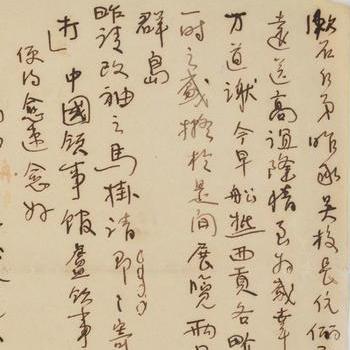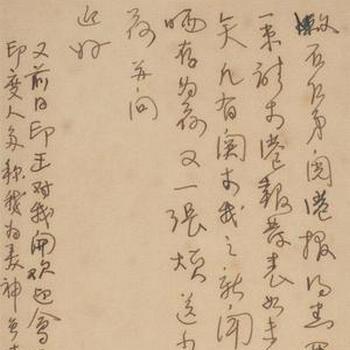The Macao Museum of Art (MAM) has a collection of letters and related documents, in a total of 38 pieces (sets), from Gao Jianfu, a founder of the Lingnan school of Chinese painting, and Deng Fen, hailed by Zhang Daqian as the only artist of Lingnan painting in modern times. The inclusion and subsequent studies of these items from the two painters who had deep connection with Macao will help enrich documentation resources for research on the city’s art history.
Gao Jianfu was born in Yuangang, Panyu in Guangdong. In the early 20th century, he studied at the Canton Christian College, which had been renamed from its previous Christian College in Guangzhou after its relocation to Macao. He won the Grade A Award for his works in the ‘Chinese Art Exhibition’ held by Macao’s Portuguese administration in February 1924. He left for India to participate the ‘All Asia Education Conference’ in November 1930, while he organised Chinese painting exhibitions and studied the art of Southeast and Southern Asia during his trip.
The collection includes Gao’s letters to Rong Shushi who lived between Guangdong, Hong Kong and Macao, about what Gao saw and heard during his studies and sketching tours in India, Sri Lanka, Myanmar and Bhutan from 1930 to 1932 – with relevant photos and local press clippings attached, for Rong to forward to media outlets in Hong Kong and Mainland China, so that the public could learn about his trips and perceptions of Indian art.
The pursuit of art by this pioneer of Lingnan painting had a profound impact on the development of the school, and his tours demonstrated his artistic quest for ‘absorbing the best from China and other countries’.
Deng Fen was considered one of the most accomplished painters in Guangdong of the 20th century, known for his unusually distinctive paintings of women, flowers and birds. Deng was active in the art and Cantonese opera circles in Guangzhou, Hong Kong and Macao. He had lived in the Lou Kau Mansion of Macao’s merchant Lou Hun Chong, the property Iek Yun Kok, of the brothers Lei Man Ian and Lei Man U, as well as in the Tai Heng bank building of the mogul Ng Wai Kai in the 1940s. Later on, he moved to the Kei Han Club on the Travessa do Auto Novo upon the invitation of Lei Hoi Chio, Vong Sou and other businessmen, where he established a painting studio named ‘Ngao Si Hong Koi’. Deng travelled between Macao and Guangzhou during the Anti-Japanese War and settled down in Macao with his family as the war ended. He moved to Hong Kong in the 1950s, but still frequently commuted between Hong Kong and Macao. Deng’s letters to Ho Yin about his participation in an art exhibition in the early 1950s has become a part of MAM collection.


